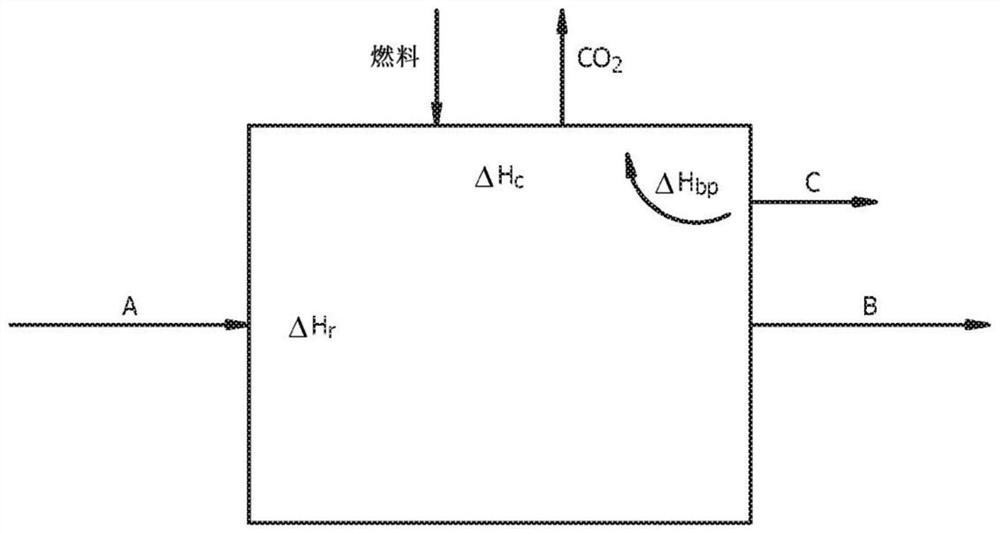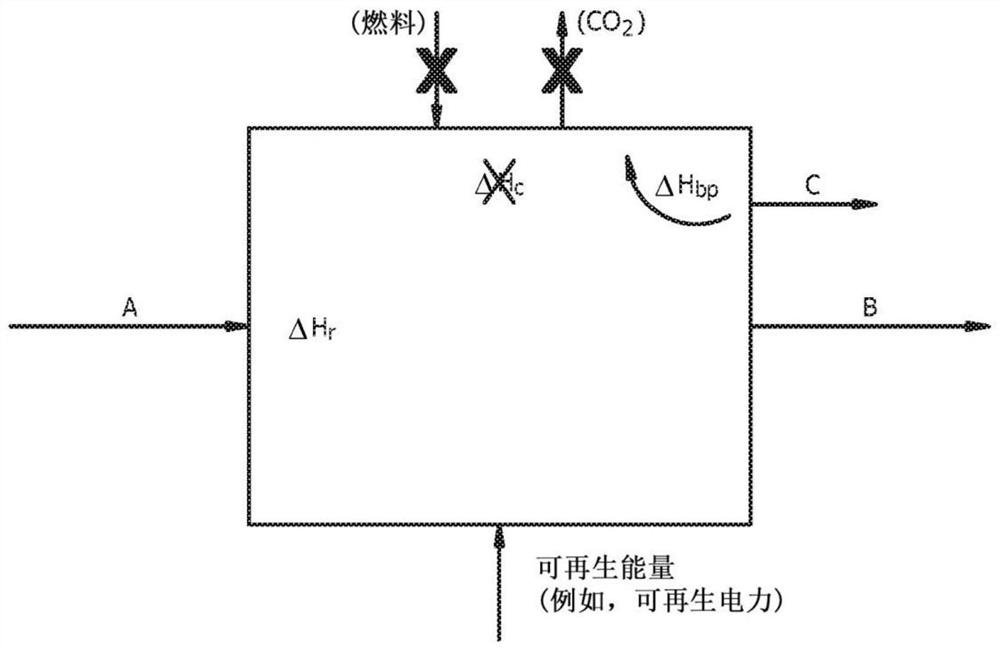Use of renewable energy in olefin synthesis
A technology for olefins and light olefins, applied in the field of electrification, which can solve problems such as energy efficiency loss
- Summary
- Abstract
- Description
- Claims
- Application Information
AI Technical Summary
Problems solved by technology
Method used
Image
Examples
Embodiment
[0119] Having generally described the embodiments, the following examples are given as specific embodiments of the disclosure and demonstrate the practice and advantages thereof. It should be understood that these examples are given by way of illustration and are not intended to limit the description or the claims in any way.
[0120] in relation to the example Figure 5-9 In , the lightning bolt symbol is used to denote electricity, especially renewable electricity, while the triple elongated "S" symbol is used to denote steam usage. exist Figure 5-9 and in the description of the embodiments below, pumps and miscellaneous energy banks are indicated at 217 .
Embodiment 1
[0129] Example 1 is the partial electrification of the steam cracking process described in Comparative Example 1 according to one embodiment of the present disclosure. In Example 1, the auxiliary boiler is removed and the energy supplied to the boiler by burning natural gas is replaced by a smaller amount of renewable electricity. This substitution of external energy required some reconfiguration of the energy integration of the process; in Example 1, the most important differences were that (1) the cryogenic refrigeration system and some pumps were now driven by electric motors, (2) the recirculated water was evaporated to Some of the energy required to make the diluent vapor is provided by electrical heating, and (3) the TLE is replaced by a heat exchanger system so that much of the heat recovered from cooling the hot product gas is used to preheat the feed gas.
[0130] Image 6The key elements of the electrification device IV of Embodiment 1 are shown in . As in Comparat...
Embodiment 2
[0135] Example 2 is a full electrification of the steam cracking process described in Comparative Example 1 according to one embodiment of the present disclosure. In Example 2, the energy supplied by the natural gas-fired auxiliary boiler and cracking furnace in Comparative Example 1 was replaced by renewable electricity that powered all compressors and pumps, powered cracking, and recirculated and make-up water The evaporation provides heat. Additionally, the TLE of Comparative Example 1 was replaced by a heat exchanger system such that much of the heat recovered from cooling the hot product gas was used to preheat the feed gas. These changes allow elimination of the process steam system and complete avoidance of flue gas losses.
[0136] Figure 7 Key elements of the electrification device V of Embodiment 2 are shown in . The ethane feed 205 in an amount of 236 t / hr is combined with the recycle gas in the ethane recycle stream 242 and the diluent steam in the dilution ste...
PUM
 Login to View More
Login to View More Abstract
Description
Claims
Application Information
 Login to View More
Login to View More - R&D
- Intellectual Property
- Life Sciences
- Materials
- Tech Scout
- Unparalleled Data Quality
- Higher Quality Content
- 60% Fewer Hallucinations
Browse by: Latest US Patents, China's latest patents, Technical Efficacy Thesaurus, Application Domain, Technology Topic, Popular Technical Reports.
© 2025 PatSnap. All rights reserved.Legal|Privacy policy|Modern Slavery Act Transparency Statement|Sitemap|About US| Contact US: help@patsnap.com



